Funje is a traditional Angolan side dish made of cassava flour whisked into boiling water.
MY FRIENDS.
IT IS TIME.
FOR A ***DRUMROLL PLEASE***
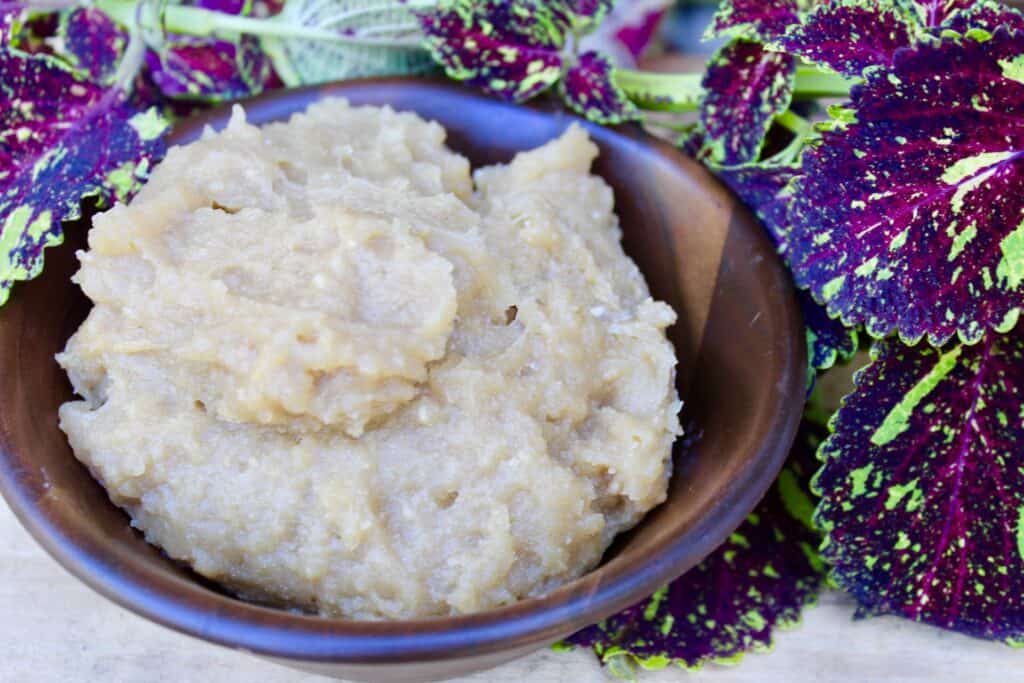
*
*
*
MOTHER-DAUGHTER COOK OFF.
Hello Reader! I try my hardest to research recipes as best as I can before posting to ensure I am representing each culture correctly. If this recipe is from your country and I have made a mistake or you have suggestions for how to make it more authentic, I would love to hear! Please leave a comment below letting me know what should be different, and I will rework the recipe. It is always my intention to pay homage and respect to each cultural dish that I cook. Thanks for reading!
Wait, Hold Up
The most common side dish in Angola is a recipe called funje. It is just boiled water and cassava flour whisked together until it forms a mashed potato-like consistency.
As I was researching funje, I came across two different ways that it could be made. The first was the modern way, where you mix the flour and the water and then put the pot in an oven. The funje needs to bake for 45 minutes and then it is ready to eat!
The other way is… well… Interesting to say the least. The second way to make funje is to use a huge pot to boil water on the stove. Once the water is boiling, you remove the pot from the stove and sit on the floor with the pot between your legs. You pour the cassava flour into the water and use a wooden oar to continuously beat the mixture until it forms the consistency you would like. Obviously we needed to try both.
 The Cook-off Begins
The Cook-off Begins
IN ONE CORNER STANDS ALEXANDRIA OF THE FOREIGN FORK. Oar in hand, boiling pot at the ready, she glares across the ring at her opponent with a look of determination on her face.
ACROSS THE RING MAMA FOREIGN FORK SMIRKS BACK AT HER DAUGHTER. She is calm, cool, and collected, ready to tackle this challenge with a whisk and an oven.
THE BELL DINGS. MAMA FOREIGN FORK IS UP FIRST.
The Modern Method
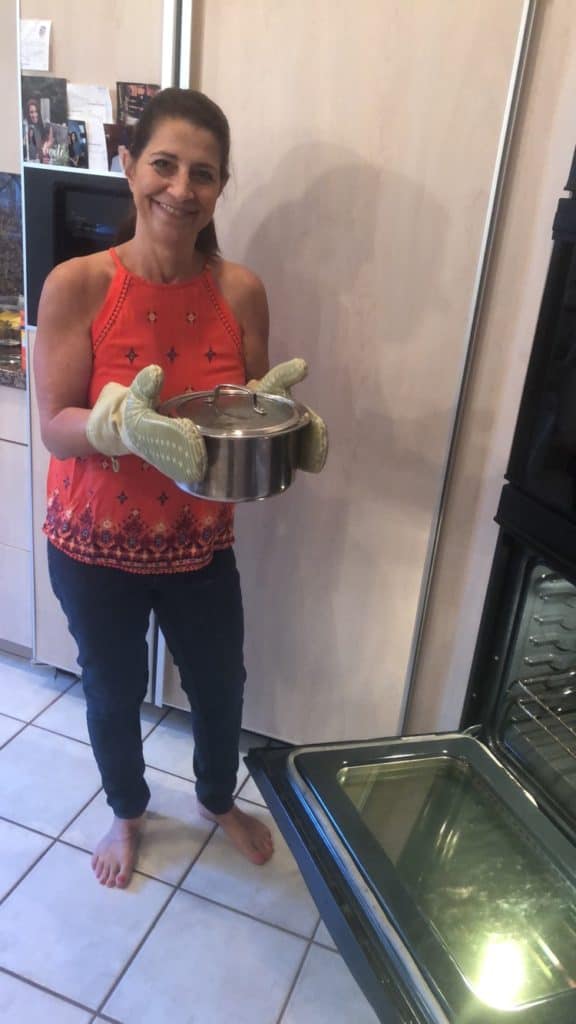
Okay my analogy kind of falls apart here because we cooked one at a time… My mom’s method was to wet the cassava flour with a little bit of cold water and mix until a stiff dough formed. She then added this dough to the water boiling on the stove and used a metal whisk to stir the mixture until it was smooth. By the end of my mom’s whisking session, she was complaining of a sore arm, and when we looked in the pot, we could see why. The mixture was thick and lumpy…. Pretty much the opposite of what we wanted. We put it in the oven anyways with high hopes that it would magically fix itself during the cooking process.
The Traditional Method
When it was my turn, I walked into the kitchen with my armor on. My feet sported 7 year old ugg boots to protect my toes from any splashing, boiling water. I had a beach towel on the ready, waiting to coat my lap so that the hot pot wouldn’t burn my legs. I’ll admit that I was a little nervous before my half of the challenge began….
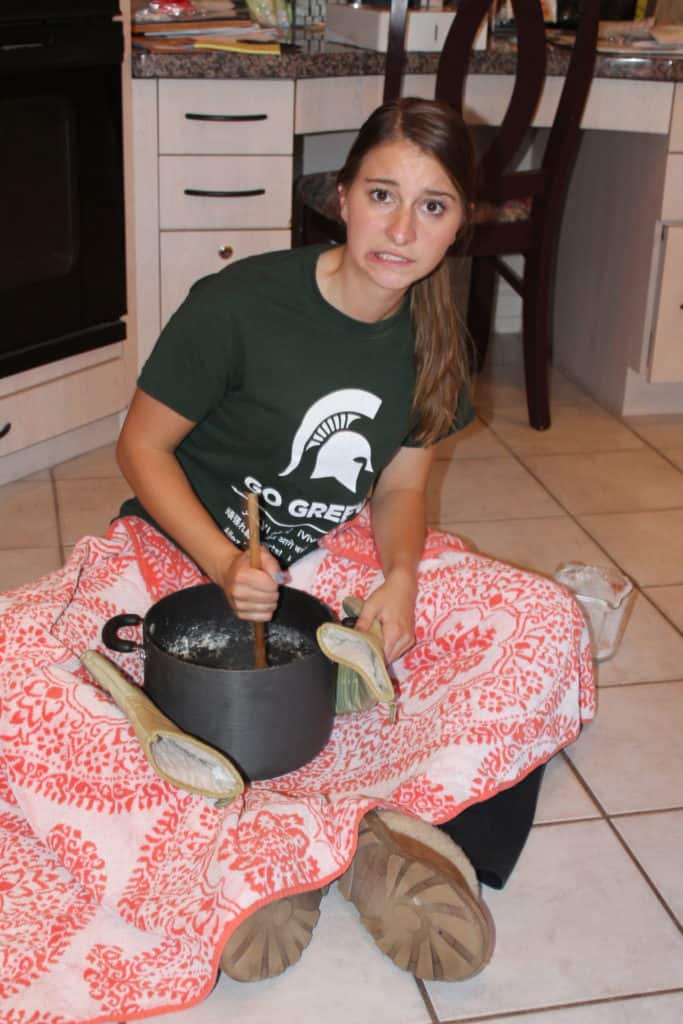
As soon as the flour hit the water, I started whisking, and I didn’t stop until I was certain that my funje was ready. It only took about 5 minutes, and at the end, I had a perfectly smooth, creamy funje just waiting to be eaten… no oven time necessary!
Now, unfortunately my friends, this success in the texture department did NOT correlate to success in the taste department. In all honesty, I think that the funje tasted exactly how it was intended to taste. However, it tasted how you would imagine… just some flour mixed with water, devoid of seasoning or add-ins. We all tried a tiny forkful, and that was about all we could handle.This isn’t to say that none of you will like it! There’s an entire country out there in which funje is a principle staple in the diet. My family might not have been a fan, but that doesn’t mean that the food of this country is inherently bad! It just means that our taste buds were not used to the different flavors of another country.
AT THE END OF THE MATCH, ONLY CHEF TRIUMPS OVER THE OTHER. ALEXANDRIA “FOREIGN FORK” DRZAZGOWSKI STANDS WITH ONE ARM RAISED ABOVE HER HEAD IN VICTORY. IN THE COMPETITION OF THE FUNJE, THE TRADITIONAL METHOD REIGNED SUPREME.
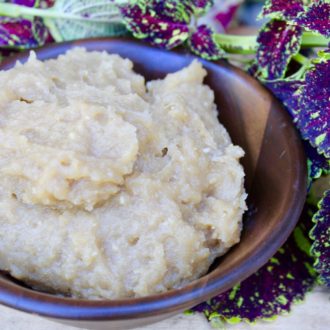
Funge (Cassava flour pudding)
Equipment
- Wooden Spoon
- Whisk
- Oven Mitt
- Platter
- Mixing Bowl(s)
- Pot(s)
Ingredients
- 2 cups cassava flour
- 4 cups water
Instructions
The Modern Way
- Preheat oven to 350 degrees.
- Bring 4 cups of water to a boil on the stove. Be sure to do this in a pot that can also be transferred to the oven with a lid.
- Put 2 cups of cassava flour in a bowl and wet with cold water until it is just damp. Mix to incorporate.
- When the water is boiling, add the pre-mixed flour and water into the boiling water, and whisk to combine. Continue to whisk until all of the lumps are out of the mixture.
- Cover with a lid and place in oven for about 45 minutes.
Traditional Method
- Bring 4 cups of water to a boil on the stove.
- When the water is boiling, remove the pot from the stove. Sit on the ground with the pot in your lap (pro tip: put a beach towel over your lap, wear shoes, and have oven mitts handy). I did not splatter at all, but its better to be safe than sorry!
- Pour the cassava flour into the water and whisk as fast and as hard as you can with a wooden oar (or a wooden spoon) until the mixture is completely smooth. A lumpy funje is considered subpar.
- Enjoy right away!


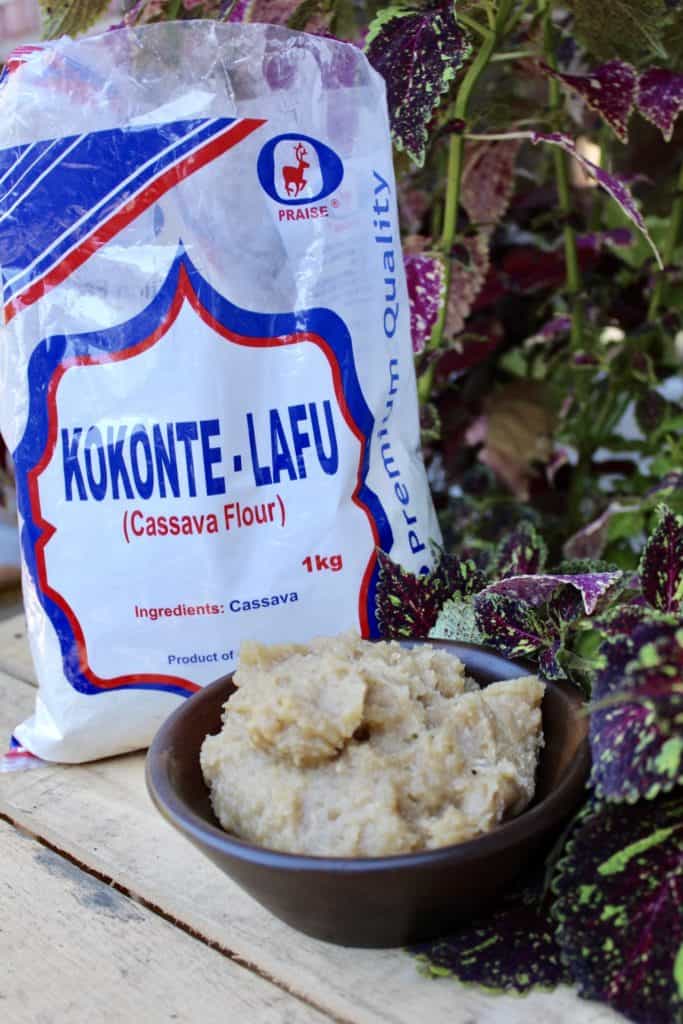
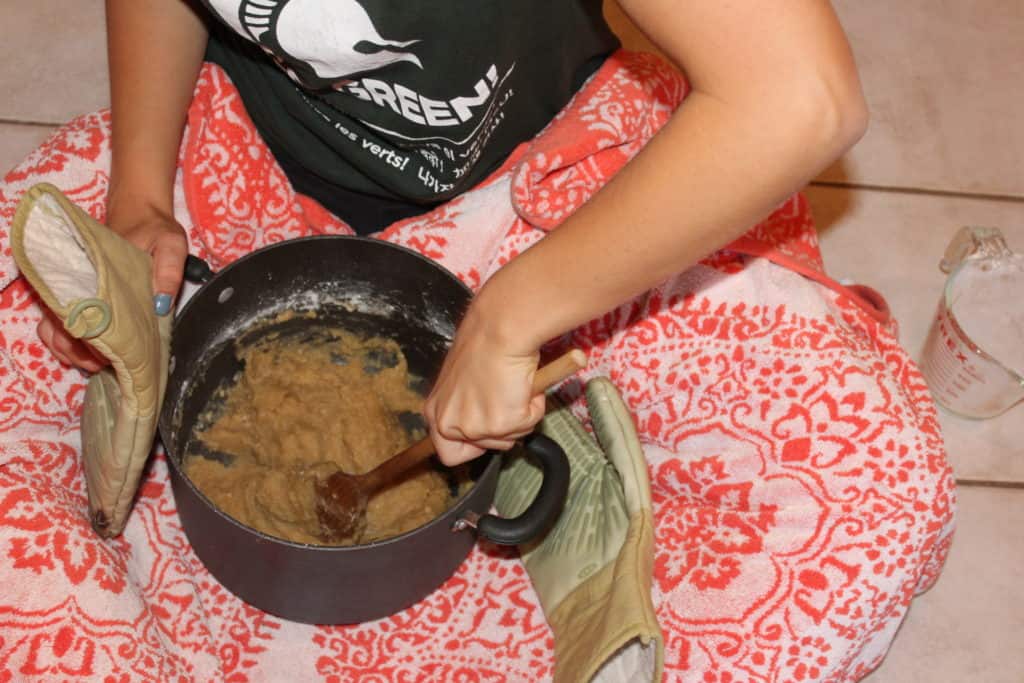 The Cook-off Begins
The Cook-off Begins



Patricia Crossley says
I lived in Angola for many years. Funge is an acquired taste. I got used to it eventually and now I love it. You need to beat it really vigorously, the flour needs to be sifted and it must be fresh. You buy it in the market. It’s a Saturday must. People also make it mixing the cassava flour and some corn meal. That is more tasty and people love it too.
I love cassava. It is a staple food in many parts of Angola. It fills you up and is served with a fish stew.
Angelica says
Hmm yeah that didn’t work out. I’m going to go to plan C for replacing the junk food refined modified tapioca flours of the world. I did make a passable smooth cassava flour pudding. But the flavor was woody like sawdust, even despite the sweetening and flavors. The texture was grainy like rice flour that hadn’t soaked before being baked. Maybe it needs to be treated like rice flour which needs more time before being cooked? Not sure I like either of these methods. Maybe there’s a longer method out there. For now my plan C is sweet potato pudding. But I worry there may be too much mold on it. I’ll have to peel carefully. Thanks for the methods anyway.
Angelica says
I got here wondering whether I needed a new method when I switched from Ener-G Tapioca Flour to Organic unrefined Cassava Flour. I found the mixing advice helpful, but I think you’re underestimating the value of premixing some flavor into the flour. What if you added sugar and cinnamon into it before you added it to the boiling water? People who are gluten free have been using the recipe for Tapioca pudding on the back of the Ener-G box for a long time. If my gut acts up it might be the only food I can eat for a few days. Thanks for the idea of the mixing with water just off the boil, I’ll try that.
The Foreign Fork says
Hi Angelica! I’m glad you found the cooking instructions helpful, I hope it suits your needs! I, too, agree that this recipe might be better with some flavor. However, my blog is centered around my project to cook one meal from every country in the world. I made this recipe (called Funje) for my Angola week, meaning that I am trying to make it as close to authentically Angolan as I can. Angolans don’t normally add sugar or cinnamon, so I didn’t either 🙂 However if I were to make this recipe to enjoy outside of this project, I would definitely add those flavorings.
Phantom says
I absolutely loved this ???? especially the Instagram stories to show the process!
Alexandria Drzazgowski says
haha thanks, my friend! I’m glad you enjoyed it 🙂